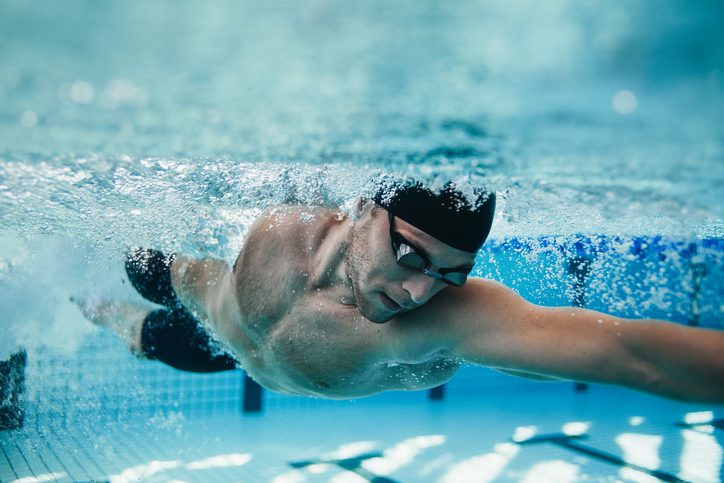Should you train for form or fitness?
Train both elements together if you want to maximize your gains
 Photo by:
Getty Images
Photo by:
Getty Images
This isn’t a choice you need to make.
A common belief by many triathletes is that “technique” or form is something that we work on when we are training at a low intensity and is separate from working on our fitness. I would hazard to guess that many people believe that it is not possible to work on both from and fitness at the same time; during a given training session you have to choose – train for form, or train for fitness, right?
Fortunately, I think that this is false choice. Not only do you not need to choose between training for form or for fitness, but you MUST train both elements together if you want to maximize your gains. This is because technique is most important when we are tired and when we are going fast. In these situations, you are either dealing with the greatest forces, because you are going fast, or have the smallest energy and strength reserves to handle disturbances from your proper form because you are tired. If you cannot maintain good technique, you will see the greatest negative consequences, either in lost efficiency, in increased injury risk, or both.
In order to execute good form when you are going fast and when you are tired, you must create training situations where you work on technique when you are going fast and/or are tired. This does not mean that all your drill or technical work needs to be done at high speeds or at the end of a workout – it is certainly easier to learn a new technique or make a challenging refinement to a movement when you are fresh and when dealing with the smaller workloads that occur at lower relative intensities. However, if you never work on technique at high speeds or when fatigued then you are missing important opportunities to improve your overall performance.
There are some specific ways to work on your technique while working at high intensity in all three major triathlon sports. A good swimming set for this is commonly referred to as “swim golf” or “swolf.” Here you swim a series of 50 m repeats where your “golf score” on each repeat is determined by the total time plus the total number of strokes you take to complete the interval. Over the course of the set, you try to get your score as low as possible – just like in golf. The key is that you do these repeats at your maximum speed and with a lot of rest; if it takes you 60 seconds to swim the 50, then take at least 60 seconds of rest after each repeat. Another key is no cheating – don’t do extra-long underwater sections to artificially lower your stroke count.
Related: Smart training – why a cool down really matters
For cycling, one good set for working on form and fitness together is often called a “spin-up.” On an indoor trainer or stretch of flat, uninterrupted road start pedalling in a moderately easy gear. Increase your pedaling cadence every 5 to 10 seconds until you can’t pedal any faster or until you starting bouncing in your seat. This should take about 45 to 60 seconds. Slow down and pedal at a low intensity for at least as long as your spin-up lasted, then repeat 4 to 5 times.
On a run, short, 50 to 100 m accelerations are a good way to focus on technique while working hard. These are ideally done on a track or soft, level grass like a soccer field. Start off with a nice easy stride and build your running speed by increasing your leg turnover until you are running as fast as you can without “forcing it” or “muscling it.” Once you have hit that top speed, stay there for about 10 to 15 strides and then let your body slowly coast its way back to down a walk. Walk back to where you started and repeat 4 to 5 times.
All of these drills allow you to work on your form and fitness at the same time. By doing so you will improve your overall form so you can go faster and also improve your ability to hold that form when you are going fast, meaning you can go fast for longer. So don’t be forced into a false choice – train for form and fitness at the same time.
Darian Silk is a triathlon coach and Clinical Exercise Physiologist based in Toronto. Read more about Darian here or email him at darian@teamatomica.com. You can also check out his TrainingPeaks profile here.
